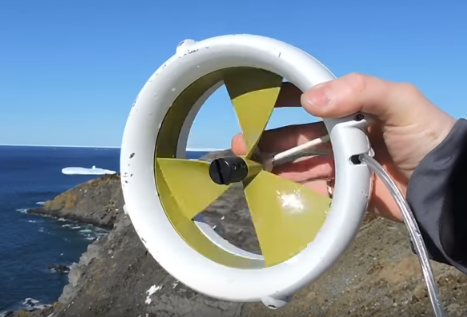Seaformatics Focuses on Hobby Market with Waterlily Micro-turbine
Published on by Water Network Research, Official research team of The Water Network in Technology
The Waterlily is the latest product from Seaformatics Systems Inc., launched a little more than 18 months ago to commercialize power-harnessing and wireless-communication technology for use in the subsea market.

WaterLilly, Source: Youtube Printscreen
But commercializing the technology, known as Sealily, was proving difficult, according to CEO Andrew Cook, who is a co-founder along with fellow engineers Adam Press, Geoff Holden and Robert Boyd.
“It’s a really tough market to get into mainly because most of the customers are fairly risk averse. They don’t really like to adopt new tech that readily and I can understand that with the costs of the programs they’re running,” says Cook.
“The data that they’re collecting can cost them hundreds of thousands of dollars, if not millions of dollars, to get and if a piece of equipment can cause loss of some of that data, then it’s not something they’re going to want to try.”
In order to generate the capital needed to build demos and get them into the hands of clients, the Seaformatics team decided to miniaturize the technology into a tool that would appeal to the outdoor enthusiast market.
The Waterlily was born and the interest was immediate. A Facebook video of the 3D printed prototype — “It was just a whirligig spinning in the wind,” admits Cook — garnered well over 20,000 views on the first day alone.
Content curators soon caught wind of the product and after it went viral on one popular science and technology website, Discovery Channel featured it on an episode of Daily Planet.
“That was on a Friday night, then Saturday our orders just started to take off and it’s been going well ever since,” says Cook, who says more than 600 have been pre-ordered through the company’s website at a discount rate of $159.
Seaformatics is closing out its first investment round in the coming days that will see them receive $500,000 that will be used to produce the first batch of the Waterlily.
The plan is to use Canadian manufacturers.
“Canadian contract manufacturers — especially with the low volume stuff, we’re not building millions of units yet — are trying to be competitive in terms of rate and we think we’ll get better quality in the end if we get it made in Canada,” Cook says.
Like its parent product, the Waterlily uses water current or wind to generate 5V power output for charging USB devices via a direct charging cord that measures 12 feet.
A quick-moving river or winds of 36 kilometres per hour, for instance, will charge a smartphone in two and a half hours.
Read full article: Herald Business
Attached link
http://www.youtube.com/embed/BZyGkECH4mgMedia
Taxonomy
- Technology
- Turbine
- Hydropower
- Energy Efficiency
- Turbines